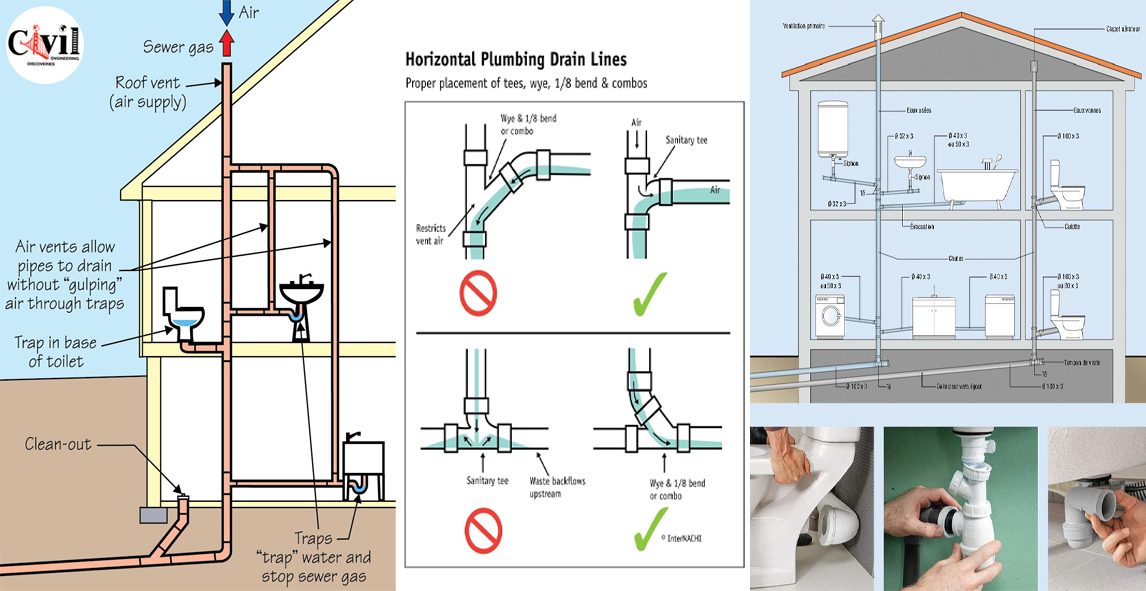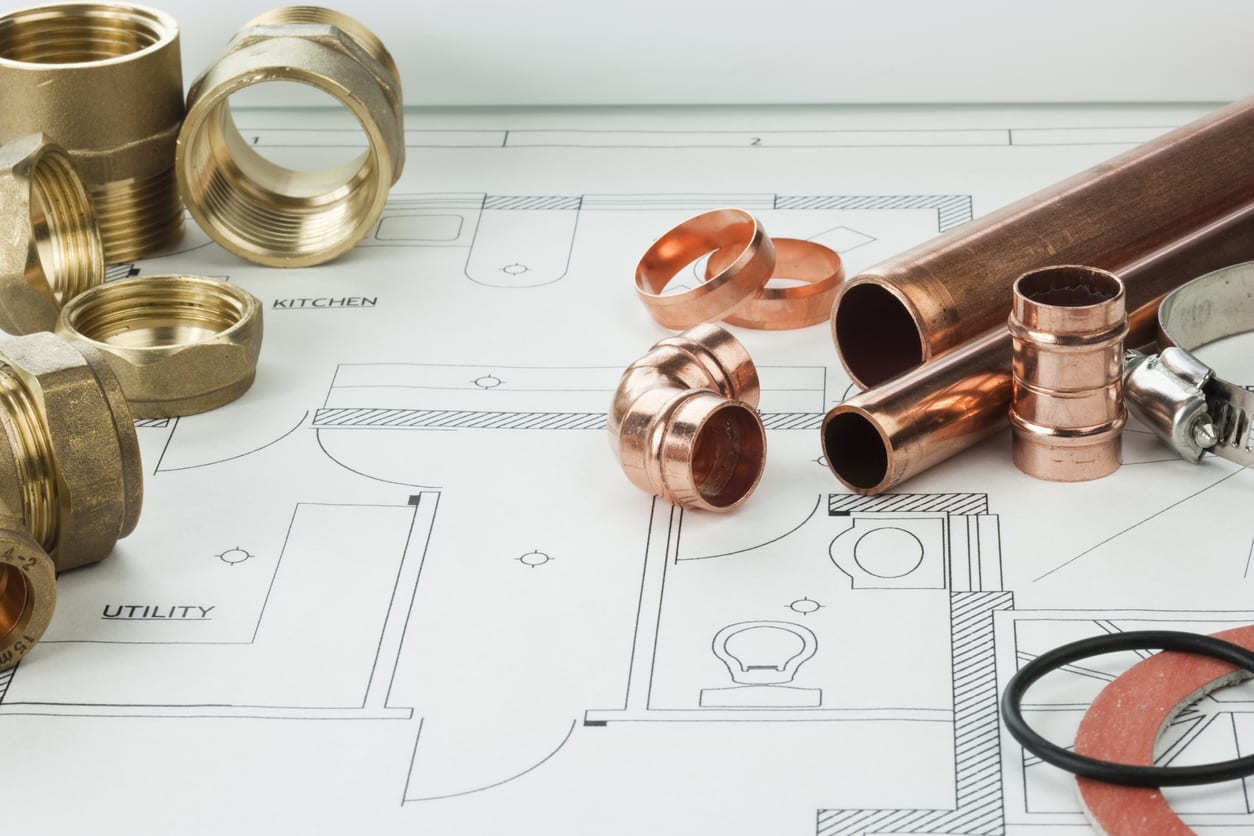Understanding The Anatomy of Your Property's Plumbing System
Understanding The Anatomy of Your Property's Plumbing System
Blog Article
Do you find yourself on the lookout for facts and techniques concerning Understanding Your Home's Plumbing Anatomy?

Comprehending how your home's pipes system functions is important for every home owner. From providing clean water for alcohol consumption, cooking, and bathing to securely eliminating wastewater, a well-maintained pipes system is important for your family's health and convenience. In this extensive guide, we'll discover the complex network that comprises your home's plumbing and offer ideas on maintenance, upgrades, and taking care of usual issues.
Intro
Your home's plumbing system is greater than simply a network of pipes; it's a complicated system that ensures you have access to tidy water and efficient wastewater elimination. Knowing its parts and how they interact can help you stop pricey repair services and ensure whatever runs smoothly.
Standard Components of a Pipes System
Pipes and Tubes
At the heart of your plumbing system are the pipelines and tubing that bring water throughout your home. These can be constructed from different products such as copper, PVC, or PEX, each with its advantages in terms of durability and cost-effectiveness.
Components: Sinks, Toilets, Showers, etc.
Fixtures like sinks, bathrooms, showers, and bath tubs are where water is used in your house. Understanding exactly how these components attach to the plumbing system aids in identifying troubles and intending upgrades.
Valves and Shut-off Points
Shutoffs control the circulation of water in your pipes system. Shut-off shutoffs are crucial throughout emergency situations or when you require to make repair work, enabling you to isolate parts of the system without interrupting water flow to the whole house.
Water System System
Key Water Line
The main water line links your home to the metropolitan supply of water or a private well. It's where water enters your home and is dispersed to numerous components.
Water Meter and Stress Regulatory Authority
The water meter steps your water use, while a stress regulator makes sure that water moves at a secure stress throughout your home's pipes system, preventing damage to pipes and fixtures.
Cold Water vs. Hot Water Lines
Comprehending the distinction between cold water lines, which provide water straight from the major, and hot water lines, which carry heated water from the hot water heater, aids in troubleshooting and planning for upgrades.
Drain System
Drain Pipes Water Lines and Traps
Drain pipelines lug wastewater away from sinks, showers, and toilets to the sewage system or septic tank. Traps avoid drain gases from entering your home and likewise trap debris that can create clogs.
Air flow Pipes
Ventilation pipes allow air into the drainage system, avoiding suction that might reduce drainage and trigger traps to empty. Proper ventilation is vital for preserving the integrity of your plumbing system.
Importance of Appropriate Drain
Making certain correct drainage protects against back-ups and water damages. Routinely cleaning drains pipes and keeping catches can stop expensive repair work and extend the life of your pipes system.
Water Furnace
Kinds Of Water Heaters
Water heaters can be tankless or standard tank-style. Tankless heating units warm water as needed, while storage tanks store warmed water for prompt usage.
Exactly How Water Heaters Connect to the Plumbing System
Recognizing exactly how water heaters attach to both the cold water supply and warm water circulation lines assists in detecting concerns like insufficient hot water or leakages.
Upkeep Tips for Water Heaters
Frequently flushing your hot water heater to eliminate sediment, checking the temperature level setups, and examining for leakages can prolong its life expectancy and enhance power effectiveness.
Usual Pipes Problems
Leaks and Their Reasons
Leakages can occur due to maturing pipes, loosened fittings, or high water pressure. Addressing leakages immediately protects against water damage and mold and mildew growth.
Obstructions and Clogs
Blockages in drains pipes and toilets are commonly caused by flushing non-flushable products or a build-up of grease and hair. Using drain screens and bearing in mind what goes down your drains can avoid blockages.
Indicators of Plumbing Issues to Expect
Low water stress, sluggish drains pipes, foul odors, or unusually high water expenses are indicators of potential plumbing problems that ought to be resolved without delay.
Plumbing Maintenance Tips
Routine Inspections and Checks
Arrange annual plumbing assessments to capture issues early. Search for indications of leakages, deterioration, or mineral buildup in faucets and showerheads.
Do It Yourself Maintenance Tasks
Straightforward jobs like cleaning faucet aerators, checking for bathroom leakages making use of dye tablets, or shielding revealed pipelines in cold climates can avoid major plumbing issues.
When to Call an Expert Plumbing
Know when a plumbing concern needs professional experience. Trying complicated repairs without appropriate expertise can lead to more damages and greater repair service costs.
Upgrading Your Plumbing System
Reasons for Upgrading
Upgrading to water-efficient fixtures or replacing old pipes can enhance water high quality, minimize water costs, and boost the worth of your home.
Modern Plumbing Technologies and Their Advantages
Discover modern technologies like wise leak detectors, water-saving bathrooms, and energy-efficient hot water heater that can conserve cash and minimize environmental impact.
Expense Factors To Consider and ROI
Calculate the ahead of time costs versus lasting financial savings when taking into consideration plumbing upgrades. Numerous upgrades pay for themselves via lowered energy expenses and fewer repairs.
Environmental Influence and Conservation
Water-Saving Fixtures and Appliances
Installing low-flow faucets, showerheads, and bathrooms can substantially decrease water usage without sacrificing efficiency.
Tips for Minimizing Water Usage
Straightforward behaviors like repairing leaks without delay, taking much shorter showers, and running complete loads of laundry and recipes can preserve water and reduced your utility bills.
Eco-Friendly Plumbing Options
Consider sustainable pipes products like bamboo for floor covering, which is durable and environment-friendly, or recycled glass for kitchen counters.
Emergency situation Preparedness
Actions to Take During a Pipes Emergency
Know where your shut-off shutoffs lie and exactly how to shut off the supply of water in case of a burst pipeline or significant leakage.
Value of Having Emergency Contacts Helpful
Maintain call details for local plumbings or emergency situation services easily available for fast action during a pipes dilemma.
DIY Emergency Situation Fixes (When Applicable).
Temporary solutions like utilizing air duct tape to spot a leaking pipeline or putting a bucket under a trickling tap can lessen damages until a specialist plumbing technician gets here.
Conclusion.
Understanding the makeup of your home's plumbing system equips you to keep it successfully, saving time and money on repairs. By following routine upkeep routines and remaining notified concerning modern-day plumbing modern technologies, you can ensure your pipes system operates successfully for many years to find.
HOW YOUR PLUMBING SYSTEM WORKS
Which Pipes Do What?
Blue lines = fresh water supply entering the building
Red lines = hot water supply entering the building
Grey lines = pipes carrying waste away from the building and venting pipes carrying gases away from the building (through the roof)
YOUR MAIN PLUMBING SYSTEMS
There are two main plumbing systems that support your home s basic plumbing needs one that brings clean water into your home, and one that sends dirty water away from your home. Connected to the toilet, bath, shower, and other faucets in your home, these two systems keep your water flowing in the right directions.
ACCESSING FRESH WATER
Fresh and clean water is brought into your home through the main water supply line . Filtered through one pipe, this water is pressured to flow into the various fixtures in your home at any given time.
This water can be sourced from a well located on your property, a pond or river (mostly cottages), or, as in most cases, from the city s municipal water treatment centre. However, it is important to note that water that is untreated, such as the water siphoned from ponds or rivers, may not be safe to drink. Personal water supplies always need to be treated for hardness and contaminants before consumed.
MUNICIPAL WATER SUPPLIES
Improve taste and odour
Remove sediment
Eliminate hardness
Reduce chlorine
COLD WATER SUPPLY VS. HOT WATER SUPPLY
Cold water flows into your home or building through the service line, which then distributes hot or cold water to your fixtures. This line is most commonly run through a central column that runs floor to floor. Hot water runs in short and straight pipes as the longer the pipeline, the more heat that will be lost in the transfer. Having shorter pipes also allows residents to access hot water more quickly.
WASTE WATER SYSTEM
Your wastewater system is divided into two parts pipes that send wastewater away from your home and venting pipes that send sewer gas away from your home. Sewage water travels through pipes that flush the water and waste towards local sewers that are operated and managed by your city or town. Most sewer systems rely on gravity to move the wastewater to where it needs to go.
The further away from your toilet or sink, the larger wastewater pipes become. This allows for waste to be disposed of from various parts of your home or business at once without pipe blockages. The angle and flow of these pipes are also essential for keeping your waste pipes clear of build up.
https://harrisplumbing.ca/how-your-home-plumbing-system-works/

HOW YOUR PLUMBING SYSTEM WORKS
Which Pipes Do What?
YOUR MAIN PLUMBING SYSTEMS
There are two main plumbing systems that support your home s basic plumbing needs one that brings clean water into your home, and one that sends dirty water away from your home. Connected to the toilet, bath, shower, and other faucets in your home, these two systems keep your water flowing in the right directions.
ACCESSING FRESH WATER
Fresh and clean water is brought into your home through the main water supply line . Filtered through one pipe, this water is pressured to flow into the various fixtures in your home at any given time.
This water can be sourced from a well located on your property, a pond or river (mostly cottages), or, as in most cases, from the city s municipal water treatment centre. However, it is important to note that water that is untreated, such as the water siphoned from ponds or rivers, may not be safe to drink. Personal water supplies always need to be treated for hardness and contaminants before consumed.
MUNICIPAL WATER SUPPLIES
COLD WATER SUPPLY VS. HOT WATER SUPPLY
Cold water flows into your home or building through the service line, which then distributes hot or cold water to your fixtures. This line is most commonly run through a central column that runs floor to floor. Hot water runs in short and straight pipes as the longer the pipeline, the more heat that will be lost in the transfer. Having shorter pipes also allows residents to access hot water more quickly.
WASTE WATER SYSTEM
Your wastewater system is divided into two parts pipes that send wastewater away from your home and venting pipes that send sewer gas away from your home. Sewage water travels through pipes that flush the water and waste towards local sewers that are operated and managed by your city or town. Most sewer systems rely on gravity to move the wastewater to where it needs to go.
The further away from your toilet or sink, the larger wastewater pipes become. This allows for waste to be disposed of from various parts of your home or business at once without pipe blockages. The angle and flow of these pipes are also essential for keeping your waste pipes clear of build up.
https://harrisplumbing.ca/how-your-home-plumbing-system-works/
I stumbled upon that piece of writing about when doing a lookup on the search engines. Are you aware of anybody else who is very much interested in the subject? Take a moment to promote it. Thank you for taking the time to read it.
Schedule An Appointment Report this page